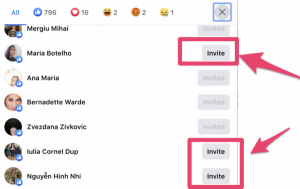
It seems to be human nature to gravitate toward simplicity instead of complexity. Look at Google for example. When it came to market with its search site, it had a clean, white screen with one text entry box. Other search sites at the time, Infoseek, Lycos, Altavista, Yahoo!, all took a more complicated route: building portals with home screens cluttered with links. We know how quickly the portal approach failed.
And yet, when it comes to enterprise software, we see large complicated systems with user interfaces that offer multiple, cluttered screens.
We recently had the opportunity to implement a new feature in our enterprise software. The feature, if we are totally honest here, is not new – simply put, it is related to scanning documents on a multifunction printers and having it automatically stored elsewhere – cloud repositories, accounting or ERP systems. In the age of digitization and moving toward paper-less processes, it became important to update our scan to email solution with more powerful, efficient document workflows.
Scanning a document should not be that difficult: slap a document on the glass and hit the scan button, right? We looked at what currently existed – whether native scanning done by the printer manufacturer or through an add-on embedded system that has additional bells and whistles – and we found it was complicated.
Much like the now defunct search sites, the existing solutions had cluttered screens and multiple pages of options often requiring manual entry of email addresses. So what could we bring to the market that would be different? We decided to focus on simplicity.
Now, many product designers want to add this feature and that feature to make the product robust, powerful and have more bells and whistles than the competition. It won’t sell if it doesn’t have this and that, they say. And, they are right of course. But you see, they are confusing simple with simplicity.
Yes, it can’t be simple; it needs to have powerful options – certainly the things that competitors have. But it can be powerful and have the elegance of simplicity. For the user’s sake.
For the user’s sake, take away all the complexity – hide it from them. Make it as close to one touch as possible to do what they need to do. I won’t get into what we did in our particular case, but suffice to say, when we show it to IT, they like the fact that it is easy to use – they know they won’t get calls or help desk tickets and yet it has all the powerful features they need. In fact just showing our scan workflow screen to users, compared to what exists today, is like looking at Google’s search page and that of a Yahoo! Home page.
IT knows that the biggest barrier to employees adopting something is ease of use. It if is complicated, if it even looks complicated, employees will not use it. At best, they’ll be forced to use it, they’ll hate it and productivity (and possibly morale) goes down.
If you are contemplating adding your next big feature – whether it be for the enterprise or even for the consumer, see what you can take away from the user experience. Challenge your teams to focus on simplicity removing the complexity from the user. In the eyes of the user, less is more.
Business & Finance Articles on Business 2 Community(71)






